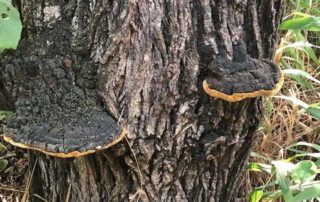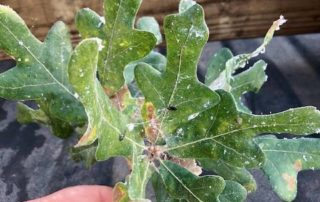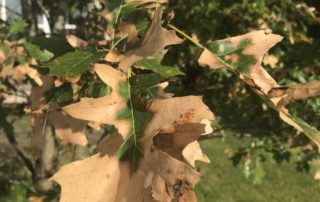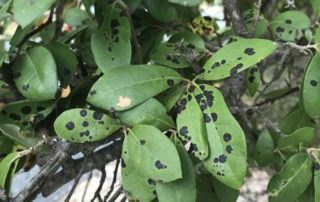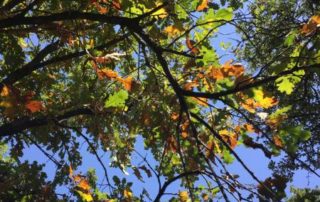Our Tree Care Services Lakeway, TX
Looking for reliable tree services in Lakeway, Texas? Then look no further than Good Guys Tree Service, the foremost arborist specialists in Lakeway. We have over 20 years industry experience and are passionate about trees, with our goal to be always ensuring the long-term health of your trees!
Services We Offer As Tree Doctors Who Care
- Fungal Infections
- Chlorosis & Other Mineral Deficiencies
- Conks, Cankers, Brackets & Armillaria growths
- Wound Care
- Bacterial Infections
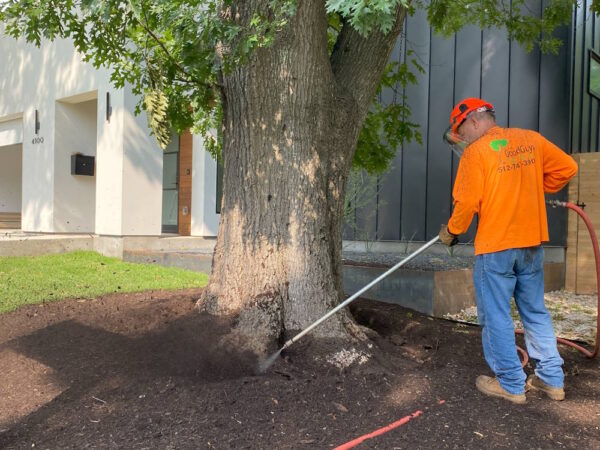
Chlorosis & Other Mineral Deficiencies That Require Tree Care Services
Many trees throughout Lakeway suffer from mineral deficiencies, the most common being iron deficiency, better known as chlorosis. Other common deficiencies include manganese and zinc, all of which can be attributed to the unique Texas climate!
Identifying Chlorosis
If your tree is suffering from chlorosis then the most obvious sign will be in the colour of the leaves. Rather than being a rich green tone, the leaves are lighter, possibly even yellowing. If your leaves look light or are yellowing, the tree may be anaemic and suffering from a lack of iron.
How We Can Help
We offer a simple but effective treatment for chlorosis that involves injecting the tree with a special treatment that quickly absorbs into its vascular system. Results are fast, showing improvement to leaf color as quickly as four weeks.
Depending on the extent of the issue we may also suggest a soil treatment to restore the pH level and provide more nutrients to encourage better systems that will compact chlorosis in the future.
Good Guys Tree Service provides certified arborist consultations, full treatment programs and complete tree maintenance services. Contact us today to schedule an appointment!
Fungal Infections That Require a Tree Doctor
Trees in Lakeway are often infected with various types of fungi, any of which could pose a serious issue down the line. Our arborists can identify any common tree fungus and provide necessary treatments for each type!
Identifying Fungal Infections
You can tell if a tree has a fungal infection by checking the leaves for spots, streaks, mold, and signs of warping. Twigs that appear dead or dying at the tips may also indicate a fungal infection. If you are unsure whether the tree has an infection, we can check it for you!
How We Can Help
If your tree has a fungal infection the treatment is quick and easy. We inject or spray the tree with a special fungicide that kills off the infection and prevents it from spreading, so it does help to get a treatment quickly if you think your tree is infected!
Bacterial Infections
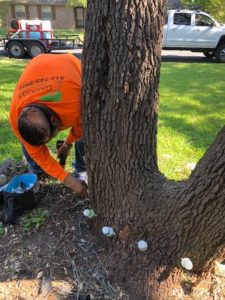 Like fungal infections, bacterial infections are common in trees throughout Lakeway, although spotting them can be harder! Our expert arborists can quickly identify any bacterial infection your tree has and provide appropriate treatments.
Like fungal infections, bacterial infections are common in trees throughout Lakeway, although spotting them can be harder! Our expert arborists can quickly identify any bacterial infection your tree has and provide appropriate treatments.
Identifying Bacterial Infections
The easiest way to spot a bacterial infection is to check the leaves for signs of blight, scorching or shriveling, while the tips may also appear burnt. If the tree has an open wound then you can check this for a black residue, which is another sign of infection.
Root rot is harder to spot has it is hidden amongst the roots, although we ca identify this for you by excavating some of the roots for analysis.
How We Can Help
It depends entirely on the infection and its cause. Some bacterial infections are caused by environmental factors like insect infestation, poor soil conditions, or trees being too close together that they lack good airflow.
In any case, we take the necessary approach to remove the infection from the tree. This could be applying an insecticide, improving drainage, or pruning leaves – it all depends on the nature of the infection!
Should your tree be worse for wear due to infection, we may also suggest an antibiotic or immune system elicitor to help with its recovery.
Tree Growths: Conks, Cankers, Brackets & Armillaria growths
Conks, cankers, brackets, and armillaria are some of the most common growths found on trees in Lakeway. While a type of fungi, these growths pose their own problems compared to other fungi infections, so require a different treatment.
Identifying Tree Growths
Tree growths are quite easy to identify as they are notable protrusions forming across the branches and trunk of the tree. If these are found on branches and the upper portion of the tree, it may not be much of a problem, with only growths at the main trunk that cause the issue for the tree.
If growths are present on the main trunk of the tree it is a sign that the fungus has spread inside of the tree. This means that it is only a matter of time before the dead wood feeds the fungus to the point where it spreads throughout the tree, slowly killing it off.
How We Can Help
Sadly, there is not much that we can do to help with this type of fungal infection. We may be able to remove branches on the upper portion of the tree, although anything present on the main trunk cannot be properly treated.
Removal is the only true treatment here. Depending on the severity of the issue, we may recommend immediate removal as the tree may be too unstable and pose a significant health and safety risk.
Tree Wound Care
Trees face a lot of wear and tear over the years, from human interactions to extreme weather conditions, any of which may cause damage. Tree wounds are unsightly and may be a cause for concern, which is where we can help.
Identifying a Tree Wound
Tree wounds are quite easy to spot. They are either cracked or broken branches or large openings found across the trunk/branches, with any wound that is larger than 20% of the tree considered severe damage.
How We Can Help
There is not much that we need to do when helping with a tree wound in Lakeway, Texas! Trees are incredibly tough, boasting some of the best restorative properties in nature. Simply put, the tree will do a better job healing itself than we could ever do!
We can do some things to help with the process, mainly creating the perfect environment for it to recover. This may involve a treatment or two to encourage regrowth, which we will recommend based on the severity of the wound and the overall health of the tree.
Insect Infestation
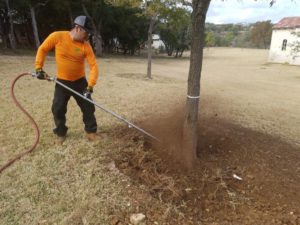
Trees and insects share a harmonious relationship, yet sometimes the insects start causing problems that have a negative impact on tree health.
Identifying an Insect Problem
- Leaves: Insects are commonly found on tree leaves, which provide a source of food and shelter. In most cases they are found in healthy amounts, although too many insects may lead to excessive loss of foliage.
- Bark: The most obvious sign of insects in the tree bark is peck marks from woodpeckers. This indicates larva are living inside the trunk and will start eating it, while chunks of bark and/or missing branches shows signs of infestation.
- Roots: Finding insects in the root system is tough as they are below ground, so we can help with this process, or you can check for general signs of poor health like dehydration.
How We Can Help
Insect issues are simple enough to treat with a suitable insecticide. We apply this a soil drench or injection, as sprays may cause more issues than they solve. If the tree is in poor condition, a treatment to help with recovery may be recommended.
The main issue with insect infestations is identifying them – our arborists can quickly determine the type of insects that are damaging your tree and apply an appropriate insecticide.
Soil Compaction
Soil compact is a problem that impacts countless trees throughout Lakeway, especially those found in parks, playgrounds, and high traffic areas in the yard. Basically, too much foot traffic compacts soil around the base of the tree, leading to various issues.
Identifying Soil Compaction
This is tougher as the soil is underground so knowing whether its too compact is not always obvious, so consider how often the area around the base of the tree is tread on. We are happy to test soil for compaction too, so if you are unsure, we can help you identify the problem!
How We Can Help
If we identify soil compaction around your tree the first step of treatment involves aerating the soil. We use a special auger for this, digging multiple holes in a grid patter around the base area of the tree.
This helps to improve airflow around the soil, allowing more water and nutrients to spread throughout the root system. In doing so, root systems become much stronger, encouraging better distribution of nutrients to help the tree growth much healthier.
After this we create a mulch and bordered landscaping bed at the base of the tree, helping to prevent compaction occurring again. You may need a fence installed around the base of the tree if it is in a public area like a park or playground.



